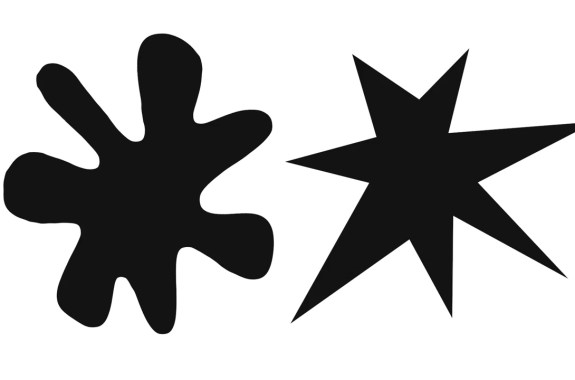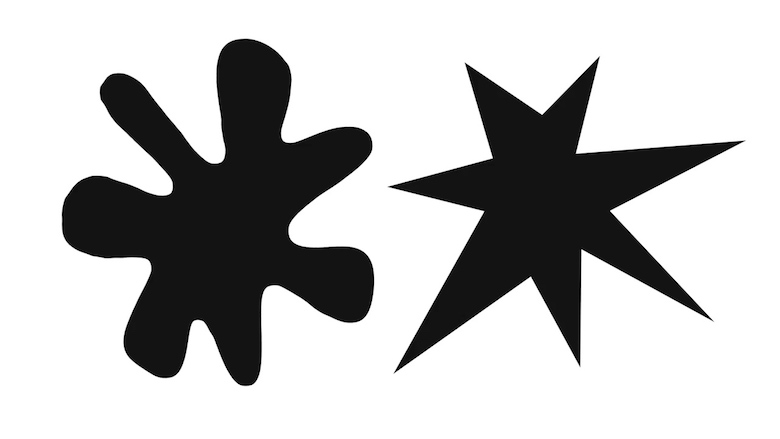Grade Level
6-12
minutes
15 min - 1 hr
subject
Media Guide
Activity Type:
Discussion, Writing, Bouba-Kiki, cognative psychology, English
Introduction
In this video from Science Friday’s Macroscope series, Luke Groskin and cognitive psychologist Kelly McCormick discuss some of the theories behind the Bouba-Kiki Effect. The Bouba-Kiki Effect describes the following phenomenon: When people are presented with a pointy shape and a blob shape and given a choice between two made-up words to name each one, most associate the pointy shape with the made-up word “Kiki” and the blob shape with the made-up word “Bouba.” Originally noted by psychologist Wolfgang Kӧhler in 1929, this phenomenon has been documented around the world in a variety of cultures, regardless of language. Are people associating the sounds with particular shape characteristics like size or roundness? Let’s take a closer look at the Bouba-Kiki Effect and the three main theories proposed to explain it.
See the Educator’s Toolbox below for a student worksheet (DOC & PDF) and video transcript.
Vocabulary
- cognitive psychology– study of the mind and mental functions like attention, memory, and language.
- synaesthesia– neurological condition where more than one sense is involved in the perception of an experience. For example, being able to taste colors.
- innate– present from birth.
Activate Prior Knowledge
- What are different ways that we communicate?
- What sounds do you associate with pain? With joy? How are they different?
- What are the five senses?
Activity Resources
- Video: The Bouba-Kiki Effect
- Video Transcript
- Reading: Robson, David. “Kiki or Bouba? In Search of Language’s Missing Link.” New Scientist. 13 July 2011.
- Student Worksheet (DOC & PDF)
Would you prefer audio? You can listen to the radio segment Behind the Bouba-Kiki Effect (6:36). Transcript here.
Discussion Questions
- What is the purpose of language? Why do you think we developed such a complex set of words?
- Are there words that give you a feeling of shape, texture, color, or speed independent of their definition?
- Which of the three theories presented in the video do you think best explains the Bouba-Kiki Effect? Why?
- GENERATE IDEAS: In the video, speakers of many languages were asked to identify Bouba and Kiki, and each of them gave the same response. What other demographic groups (e.g. old vs. young) do you think researchers should use to test this effect? Would you expect the results to be the same or different? Why?
Student Writing Prompt
In Science Friday’s video The Bouba-Kiki Effect, Kelly McCormick described three proposed explanations for the phenomenon called the Bouba-Kiki Effect. Decide which theory you think is the most likely explanation for the Bouba-Kiki Effect. Develop a paragraph that supports your claim.
Writing responses should:
— Explain one of the theories that McCormick presented.
— Provide your interpretation or example of what that theory is saying.
— Use information from the video, your group discussion, and the article to support your point.
— Address the counterclaim. Why might someone disagree with the theory you chose?
Want to do more with the Bouba-Kiki Effect?
Suggested Classroom Sequence:
- Conduct the Bouba-Kiki Test with your students.
- Share class results. Ask students to describe how they made their choice and to propose explanations for the phenomena. Ask students: Why don’t we see more variation among responses?
— Optional: graph the class data and compare to the data presented in the video.
- Introduce the Bouba-Kiki Effect to students.
- As a class, watch the Science Friday video The Bouba-Kiki Effect and read the recommended article.
- Discuss the three different theories presented by McCormick for explaining the Bouba Kiki Effect.
- Challenge students to create their own test for word and shape association.
- Break students into small groups to discuss the results of their word and shape association tests.
- Students write a paragraph supporting one theory.
See the Educator’s Toolbox below for a student worksheet (DOC & PDF).
Create Your Own Bouba-Kiki Test
- Create a list of two “pointy” sounding words and two “round” sounding words. They can be real words or nonsense words.
- Write each word on a separate card or sheet of paper.
- Test out your words on classmates, friends, adults, etc. Ask them to match your words to one of the original Bouba-Kiki images (DOC or PDF). Be sure to record your data.
Optional: Note information on your participants (age, gender, etc).
Post-Test Discussion Questions
- How did the results of your test compare with what you predicted?
- Compare your pointy and round words with the words of your classmates. Create a list of similarities and differences for the “round” words and the “pointy” words.
– Take this opportunity to sound out the words, look at their shapes, and think of the images they create in your mind.
- Think about the theories that Kelly McCormick presented to explain the Bouba-Kiki Effect. Discuss the words created by your group in relation to the three theories. Which theory is supported by your different words or your test in general?
— Theory 1- It’s Innate
— Theory 2- It’s Your Mouth
— Theory 3- It’s Learned
Writing Prompt- Reflect on Your Own Data
In Science Friday’s video The Bouba-Kiki Effect, Kelly McCormick described three proposed explanations for the phenomenon called the Bouba-Kiki Effect. You and your classmates constructed your own test to see what words (real or imagined) correlate with “pointy” and “round.” Based on the video, your group discussions, and the outcomes of your test, decide which theory you think is the most likely explanation for the Bouba-Kiki Effect. Develop a paragraph that supports your claim.
Writing responses should:
— Explain one of the theories that McCormick presented.
— Provide your interpretation or example of what that theory is saying.
— Use information from the video, your test, and your group discussion to support your point.
— Address the counterclaim. Why might someone disagree with your claim?
Other Text Resources
- McCormick, Kelly, Jee Young Kim, Sara List, and Lynne C. Nygaard. “Sound to Meaning Mappings in the Bouba-Kiki Effect”. CogSci 2015: Proceedings of the 37th Annual Meeting of the Cognitive Science Society, Pasadena, CA, 22 Jul. 2015.
- Carpenter, Siri. “Everyday Fantasia: The World of Synesthesia.” American Psychological Association. N.p., Mar. 2001.
- Pycha, Anne. “Does an “M” Sound Round to You?” Scientific American. N.p., 1 Nov. 2015.
- Chatterjee, Rhitu. “Synesthesia: Can You Taste the Difference Between Sounds?” Public Radio International, 15 Feb. 2012.
- Ramachandran, Vilayanur S., and Edward M. Hubbard. “More Common Questions about Synesthesia.” Scientific American, 14 Apr. 2003.
Looking for a possible extension? How about Bouba-Kiki with food?
Rupp, Rebecca. “Kiki or Bouba: What Is the Shape of Your Taste?” The Plate. National Geographic, 26 June 2015.
Common Core Learning Standards
CCSS.ELA-LITERACY.RI.6.7
Integrate information presented in different media or formats (e.g., visually, quantitatively) as well as in words to develop a coherent understanding of a topic or issue.
CCSS.ELA-LITERACY.RI.9-10.7
Analyze various accounts of a subject told in different mediums (e.g., a person’s life story in both print and multimedia), determining which details are emphasized in each account.
CCSS.ELA-LITERACY.W.6.1, CCSS.ELA-LITERACY.W.7.1, CCSS.ELA-LITERACY.W.8.1
Write arguments to support claims with clear reasons and relevant evidence.
CCSS.ELA-LITERACY.W.9-10.1, CCSS.ELA-LITERACY.W.11-12.1
Write arguments to support claims in an analysis of substantive topics or texts, using valid reasoning and relevant and sufficient evidence.
Educator's Toolbox
Meet the Writer
About Xochitl Garcia
@msxgarciaXochitl Garcia was Science Friday’s K-12 education program manager. She is a former teacher who spends her time cooking, playing board games, and designing science investigations from odds and ends she’s stockpiled in the office (and in various drawers at home).

